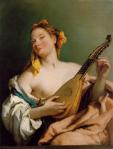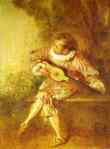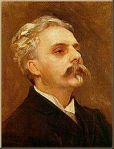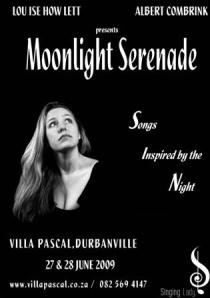Albert Combrink presents “Sweeter than Roses” at the Masque Theatre: 25 April 2010, 3pm
March 30, 2010
 My Blog has moved to www.albertcombrink.com
My Blog has moved to www.albertcombrink.com
“Sweeter than Roses” – English and Italian songs of the joys of love by Purcell, Britten, Mozart, Sondheim incl. “My Fair Lady”
DATE: Sunday, 25 April 2010
TIME: 15:00 – 16:30
VENUE: Masque Theatre – 37 Main Road, Muizenberg
BOOKING DETAILS: 021 – 788 1898 (Mon. to Fri. 09:00 to 16:00)
TICKETS: R60 (R50 Theatre Club members – regrettably no Credit Card Bookings available)
“Sweeter than Roses” – English and Italian songs of the joys of love by Purcell, Britten, Mozart, Sondheim incl. “My Fair Lady”
This delightful programme of mostly English songs explores the joys and dreams of young lovers through the songs of Purcell (“If music be the food of love”), Britten’s famous Folksong settings (“The Foggy, foggy dew”) and operatic extracts by Mozart, that master of comic characterisation. The three singers and pianist are all noted for their variety and perform in different styles, taking the audience through a tale of love lost, found and lost again. Shirley Sutherland will lead the second half of the programme with extracts from “My Fair Lady”, the show in which she had a major triumph at the Artscape Theatre in 2008. Louise Howlett, a veteran stage performer, will include extracts from her soon-to-be released second CD from the musicals “Cats” and “A Little Night Music”. Baritone John Hardie – winner of various awards such as the Leonard Hall Memorial Prize – is the perfect foil for the two ladies. He will be the Figaro to their Suzanna and Cherubino and the Don Giovanni to their Zerlinas. The programme will reflect the more playful aspect of young love, from the charm and beauty of setting of Shakespeare to more contemporary and popular music. The fact that most of the songs are in English makes this a programme with instant appeal for audiences of all ages. The keyword is variety, and versatility is what this set of performers are known for.
Meet the perfromers
Pianist Albert Combrink devised and compiled the programme as well making musical arrangements and accompanying the singers. He has worked as accompanist and musical director from the opera house to the musicals stage. Magic Flute (Isango Portabello) won a London Critics’ Olivier Award and Assassins (New Space Theatre) won two Fleur du Caps. International arrtists with whom he has worked include American soprano Judith Kellock and British superstar Lesley Garrett. Recordings as orchestral member and soloist with orchestras include works by Hendrik Hofmeyr and Alfred Schnittke with the Cape Town Philharmonic Orchestra. His broad interest in music has enabled him to put on a number of off-beat and unusual programmes. These include Ladies & Ladders (Kalfiefees), Dangerous Liaisons (Beau Soleil), and Moonlight Serenade (Kirstenbosch Chamber Music Series) – the latter in collaboration with Louise Howlett). He has been musical director of the Rotary Opera in a Convent Garden since 2007. He is member of the CT Tango Ensemble which recently launched its second CD Tango Club to a sell-out audience at the Baxter Theatre.
Soprano Louise Howlett studied singing at the Royal College of Music in London, with Margaret Cable. She performed at the Bergen Festival and Edinburgh Main and Fringe Festivals, as well as performing in the award winning production of The Ragged Child at the Sadlers Wells Theatre. Originally classically trained, her love of jazz and the musicals led her to create her own unique combination of classical, broadway and jazz “Across the Styles” projects out of which her “Serenade” series was born. These productions can vary from classical versions, to jazz standard evenings to the full range of genres blended into one programme. She has performed with great success at various venues and festivals including the Kirstenbosch Winter Chamber Music Series, the Greyton Rose Festival, and most recently at the Baxter Theatre. In one season she performed both in the classical line-up of Barry Smith’s Concert Series at St. Andrew’s Cathedral, and at the Big Blues Festival in Kleinmond.
Baritone John Hardie studied singing at UCT and Stellenbosch University and his teachers include Sarita Stern, Nellie du Toit and Marita Napier. He sang with Capab Opera for 3 years taking part in productions of “Albert Herring” and “Cosi fan Tutte”. He won the College of Music Opera prize in 1988 and 1989, the Friends of the Nico Malan Opera Prize in 1990, the Leonard Hall memorial Prize in 1991. He has performed professionally with accompanists such as Albie van Schalkwyk, Tommy Rajna and Neil Solomon.
Soprano Shirley Sutherland has proven her versatility in the fields of Opera, Muiscals and Oratorio. With Cape Town Opera she toured Sweden and Germany in productions of Rusalka, and Showboat. Her many awards include the Cape Times Best Actress Award for her role of Roxy in Chicago. She has been seen in concert around the country, including Richard Cock’s Last Night of the Proms and various oratorios.
Read more about some of the works on the programme on the following posts:
~ Benjamin Britten Folksong (re)settings: when artsong meets folksong
~ Schoenberg to Sondheim: Louise Howlett & Albert Combrink perform at Kirstenbosch
~ Breaking Rules: Discussing performers who cross over different styles and genres
Les donneurs de sérénades: Louise Howlett and Albert Combrink perform Fauré at Kirstenbosch
July 18, 2009

Louise Howlett and Albert Combrink
My Blog has moved to www.albertcombrink.com
Louise Howlett and I will be performing “Moonlight Serenade” in Kirstenbosch’s Chamber Music Breakfast Concert series on Sunday 19 July 2009, 11 a.m. with Breakfast served from 9.30 a.m.
The programme features various songs inspired by the night, including two songs by Gabriel Fauré: “Après un rêve” and “Mandoline”.
“Mandoline” is a Verlaine setting in which the singer views a party from some distance; wry comments about the attendees are followed by a rhapsodic description of their elegance as they seem to dissolve in the moonlit air. Debussy set it as well, changing the musical material with the mood of the poem, but Fauré does not develop thematically—a quiet, jaunty figure in the piano conjures the title instrument, and a returning rising scale between stanzas directs our view from detail to detail. A contrasting section introduces some whirling arpeggios and delightful dotted rhythms in the voice, to illustrate the turn of the dance. Fauré chooses just the right key: the mandolin starts to play in the bright key of G major. At the first scene change, the rising scale is suddenly in F#, all the black keys coming into play—”a sudden bit of legerdemain that perfectly captures the swoon of disorientation in the dim light, not to mention the whole affair’s hushed choreography as perceived from without”. (Description courtesy of Matthew)

Mandolin Player: Giovanni Tiepolo (1696-1770)
Les donneurs de sérénades – Poem by Symbolist poet Paul Verlaine (1844-1896), set in 1892 as “Mandoline” by Gabriel Fauré (1845-1924):
Les donneurs de sérénades
Et les belles écouteuses
Echangent des propos fades
Sous les ramures chanteuses.
C’est Tircis et c’est Aminte,
Et c’est l’éternel Clitandre,
Et c’est Damis qui pour mainte
Cruelle [fait]1 maint vers tendre.
Leurs courtes vestes de soie,
Leurs longues robes à queues,
Leur élégance, leur joie
Et leurs molles ombres bleues,
Tourbillonent dans l’extase
D’une lune rose et grise,
Et la mandoline jase
Parmi les frissons de brise.

Serenader - Antoine Watteau (1684-1721)
English Translation by Emily Ezust
“The givers of serenades”
The givers of serenades
And the lovely women who listen
Exchange insipid words
Under the singing branches.
There is Thyrsis and Amyntas
And there’s the eternal Clytander,
And there’s Damis who, for many a
Heartless woman, wrote many a tender verse.
Their short silk coats,
Their long dresses with trains,
Their elegance, their joy
And their soft blue shadows,
Whirl around in the ecstasy
Of a pink and grey moon,
And the mandolin prattles
Among the shivers from the breeze.
In poetry, the symbolist procedure – as typified by Verlaine – was to use subtle suggestion instead of precise statement and to evoke moods and feelings through the magic of words and repeated sounds and the cadence of verse (musicality) and metrical innovation. (Marie Rolf). While Debussy is more redily identified as a “Symbolist” composer, this work by Fauré resonds to the “magic of words and repeated sounds” with the magic of mandolin-like repeated strumming sounds, creating a gently bouncing accompaniment for the text. Here is a recording of a Mandolin, playing a sweet little french song by Georges Villard “La Petite Tonkinoise” , made famous in this charming 1953 version by the delightful Joséphine Baker.
Below are some recordings of “Mandoline”
A very beautiful and unusial version of “Mandoline” by counter-tenor Philippe Jaroussky and pianist Jerome Ducros, sung in a vocal coaching session with singing teacher Nicole Fallien.
Joyce Di Donato and Julius Drake give a stylish and elegant performance.
A surprisingly charming performance by Armenian mezzo-soprano Zara Dolukhanova, who uses her colloratura mezzo voice to tremendous effect.
This poem has been set to music by a number of composers including: Claude Debussy, Reynaldo Hahn, Gabriel Grovlez, Josef Szulc and Gabriel Dupont, amongst others.
A different setting of “Mandoline” by composer Gabriel Dupont, sung by Philippe Jaroussky.

French Poet Paul Verlaine
More about the poet:
French poet and leader of the Symbolist movement in poetry. Paul Verlaine’s life style wavered between criminality and naive innocence; he married a young girl in 1870 but after a year fell in love with the young poet Arthur Rimbaud, who was seventeen. With Stéphane Mallarmé and Charles Baudelaire he formed the so-called Decadents. In Verlaine’s works two impressions predominate: that only self is important, and that the function of poetry is to preserve moments of extreme sensation and unique impressions. In spite of the ‘vagueness’ of his poetry, Verlaine showed a careful craftsmanship in his compositions, using simple, musical language. He maintained the outward form of classical poetry, but his work opened the way for free verse. The Symbolists would often share themes that parallel Schopenhauer’s aesthetics and notions of will, fatality and unconscious forces, and used themes of sex (such as prostitutes), the city, irrational phenomena (delirium, dreams, narcotics, alcohol), and sometimes a vaguely medieval or Classic setting.
I enjoy performing this song. It has a sweet, innocent charm that is hard to resist. Louise’s response to the text is very alive and tells a tiny little story, like a quick snapshot of a painting, or a world that no longer exists. It does, however, make us feel like “donneurs de sérénades”. And that is pure pleasure!

Gabriel Fauré

Bachianas #5 will be performed in "Moonlight Serenade" and is recorded by Louise Howlett on her latest CD
My Blog has moved to www.albertcombrink.com
Louise Howlett and I will be performing the Bachianas Brasileiras #5 by Villa-Lobos in our new “Moonlight Serenade” programme. We have recently recorded this for release on our upcoming CD and spent a very intense few hours in the studio experimenting with different performing styles and “versions”. I am also preparing a performance of this work with Filipa von Eck for a concert in Mozambique which will commemorate the 50th anniversary of Villa-Lobos’s death. The work is so popular and well-known that I thought performing it would be relatively straight-forward. I knew it so well. Or at least, I thought I did.
Brazilian Heitor-Villa Lobos (1887-1959) is one of the most significant Latin Composers to date. He wrote works in many different styles: orchestral, instrumental, small chamber ensembles, songs and more. His music is influenced by Brazilian folk music, but he is considered a composer of classical music. A set of 9 Bachianas Brasileiras aim to combine his love for the music of his country with homage to the work of J.S. Bach. Villa-Lobos is said to have found analogies between Bach’s works and the traditional music of Brazil.
Originally written for soprano and eight-part cello ensemble, the “Bachiana #5” is very often performed incomplete. The first section, the Aria (Cantilena) composed in 1938, is often performed on its own. Its hauntingly beautiful melody has made it extremely popular and the second part, Dança (Martelo) added in 1945 is often omitted. The Aria opens with pizzicato cellos, their plucking sounds reminiscent of a large, resonant guitar. The voice enters with a melody so exquisite and haunting that it stays with you forever. And no matter where you hear it, the reaction to its beauty is instant.
Its shape is simple: A long mellifluous melody flanks a more dramatic middle section, creating an A-B-A structure similar to a Braoque “Da Capo aria” that Bach might have written. If one accepts that melody is the essence of music, and that the essence of melody is song, then one can easily see the connection between the worlds of J.S. Bach and Heitor Villa-Lobos. Melody was always apparent in the works of Bach, and not a strict or rigid type of melody, but a fluid, rhapsodic and improvisatory kind – much like many types of folksong. And in the works of both composers, the feeling of the dance is never far away. The text to the middle section was written by Ruth Valadares Correa, and is a beautiful evocation of the beauty of the moon – therefore it was an obvious choice for our “Moonlight Serenade”. But the largest part of this work has no text. The singer just sings an exquisite melody without words, a vocalise to move the listener to their core.
The difficulties with performing this work appear when you try to do it without the orchestra of cellos. Most piano versions of music originally written for orchestra, are designed to make the music “performable” without an actual orchestra. Many tricks are used by editors to imitate the sounds one would expect to hear. Tremolos, runs up and down the piano to create washes of sound, or thundering chords held in the pedal, all in an attempt to delude the listener into forgetting that the eighty-piece orchestra has been replaced by ten fingers. The problem is that a piano creates vastly different sounds to seven plucking cellos.
Villa-Lobos himself created a piano version in 1948, mainly to satisfy his publishers, who needed something they could sell easily. The work was an instant popular success and singers wanted to learn and perform it, but weren’t always in a position to provide the cello orchestra. I have searched high and low for a recording of this version, but the lack of recordings of this version bears out my impression that this was not a version for serious performance, but rather a transcription to assist a singer in learning it. Sensible and sturdy chords give no hint of the flutter of butterfly wings created by the cellos.
Villa-Lobos had also worked extensively with guitarist Andrés Segovia (1893-1987) who is considered to be the father of the modern classical guitar movement by most modern scholars. As Segovia traveled the world, he and the guitar became more and more popular. Composers such as Heitor Villa-Lobos began to compose original pieces specifically for the guitar. With their dark and melancholy mixture of dissonance and cello-like phrasing, Villa-Lobos’ compositions in particular, seem to fit the guitar perfectly. Segovia transcribed many of other composers’ works for the guitar, including a transcription of the “Bachianas #5” itself a re-working of Villa-Lobos’ 1947 guitar version.

Guitar arrangement by Villa-Lobos which forms the basis for transcriptions by Segovia and myself
This was the version I originally selected for my own performances on the piano. The thinned-out texture of the guitar version translated to the piano a lot better than I had expected. Louise and I performed this version, but the evolution was not yet complete. I would have to perform this work with other sopranos in other contexts, so I needed to adapt this into a performance version with which I felt comfortable. This guitar-version by Segovia was also “incomplete” in certain respects, not least because some of the solo cello lines were left out, or in some cases given to the soprano to sing. This was an arrangement of an arrangement.
When Louise and I went into the studio, we recorded this adaptation at the original pitch, and it sounded very good. But we wanted to experiment further, especially since we had the advantage of a microphone and a superb sound-technician Duncan MacKay. We transposed it down into a lower key and tried again. The result was something original, which blended in with the other material on the CD. Louise didn’t have to project so much to get her voice up into the high notes of the soprano range, and this created an ease of vocal production that allowed colouration that would not normally be possible. She could sing a lot softer, making the performance a lot more intimate than we had experienced before in our concerts and making it less “operatic” than most versions. This is in fact an appropriate style, since the work is written in the style of a “modinha” a sentimental love song “of uncertain origins” that evolved in Brazil and Portugal. It was a serenade of sung in the streets to guitar accompaniment, and the origins of the work are thus definitely not operatic.
Still, we can’t perform it in this intimate way in an acoustic concert. So as we come up to a series of very different performance settings, the final version has yet to emerge. At Villa Pascal’s in Durbanville, there will be a microphone for Louise, but which key will we use? The lower one that we discovered in the studio, which reveals the intimate, romantic side of her voice? Or the higher pitch at which it was written, exploiting the more operatic side of her voice? We are not yet sure.
When it comes to a purist approach to this work, classical music lovers are in difficult territory. It is true that the only “correct” version of this work is with the original cello orchestra. But the very fact that Villa-Lobos made, encouraged and sanctioned arrangements of his own works, makes it difficult to be dogmatic on this issue. A glance around at available recordings is enlightening: Click here to listen to a variety of different arrangements of “Bachianas #5” . The one omission from this list is the arrangement by Louise Howlett and Albert Combrink, but once our CD is released, we can rectify that…
Tarde uma nuvem rósea lenta e transparente.
Sobre o espaço, sonhadora e bela!
Surge no infinito a lua docemente,
Enfeitando a tarde, qual meiga donzela
Que se apresta e a linda sonhadoramente,
Em anseios d’alma para ficar bela
Grita ao céu e a terra toda a Natureza!
Cala a passarada aos seus tristes queixumes
E reflete o mar toda a Sua riqueza…
Suave a luz da lua desperta agora
A cruel saudade que ri e chora!
Tarde uma nuvem rósea lenta e transparente
Sobre o espaço, sonhadora e bela!
English translation:
Evening, a rosy, translucent cloud, slowly crosses the drowsy, beautiful firmament!
The moon gently rises into infinity, adorning the evening, like a sweet maiden dreamily getting ready, making herself beautiful, desiring her soul to be beautiful.
She calls to the heavens, the earth, to all of Nature.
She silences the birds’ melancholy laments, and the sea reflects all her treasures…
Softly the moon awakens, a cruel yearning which laughs and weeps!
Evening, a rosy, translucent cloud, slowly crosses the drowsy, beautiful firmament!
“Yes, I’m Brazilian—I’m very Brazilian. In my music, I let the rivers and seas of this great Brazil sing. I don’t put a gag on the tropical exuberance of her forests and skies, which I intuitively transpose to everything I write.”
— Heitor Villa-Lobos (http://www.brazzil.com/2003/html/articles/sep03/p109sep03.htm)
Bachianas #5 is performed by Albert Combrink and Louise Howlett on their upcoming CD.





